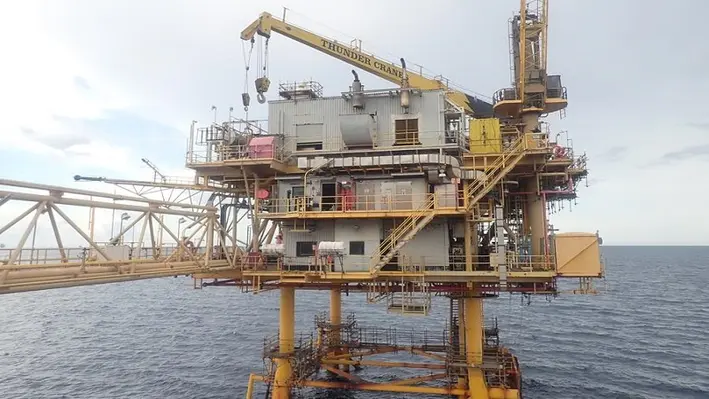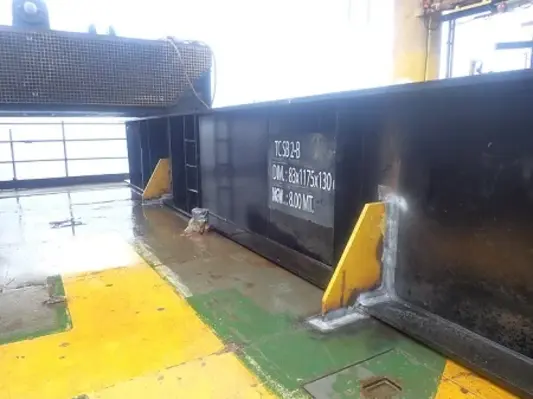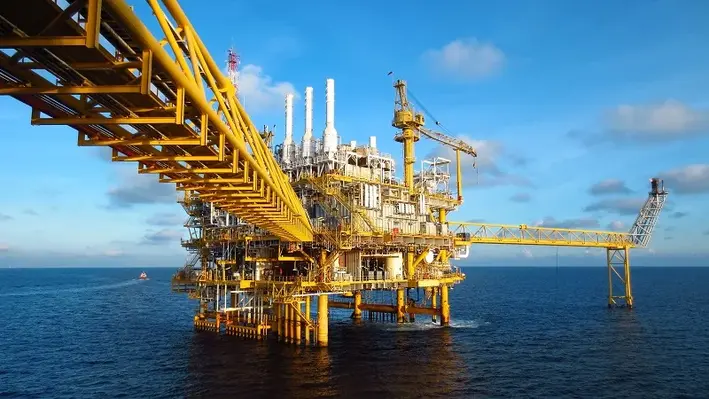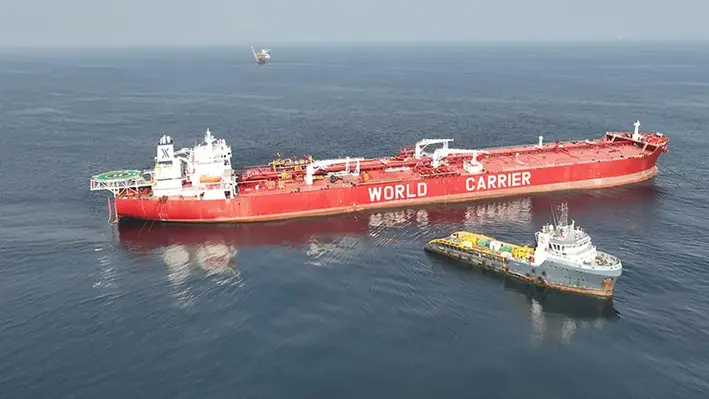
Thunder Cranes, a leading provider of portable, modular, offshore rental cranes with a lift capacity ranging from 2 to 0 tons, has published a case study outlining a successful decommissioning project it helped facilitate in the Gulf of Thailand.
The company was originally engaged by Chevron Thailand to assist in the removal of modules from the topside of a production platform located in the Gulf. This was scheduled prior to the removal of the entire well-head platform by a heavy barge crane. Removing the modules would sufficiently reduce the overall platform weight to within the capacity of the intended barge crane.
The objective of the client was a reverse-installation and backloading of various modules to supply vessel for disposal or recycling and the existing platform crane capacity and reach radius was not sufficient for the project.
Located on the top deck there were 14 large components weighing between 10 to 40 tons, as well as a number smaller components of various weights below 10 tons.
Thunder Cranes proposed the TC90 modular rental crane which has a maximum capacity of 50MT for offboard lifts and this was accepted as the best solution from the viewpoint of ensuring safe, static lifting. Cost and time savings were also to be expected.
Decommissioning challenges
According to Thunder Cranes, there were a number of unique challenges that had to be incorporated into the detailed planning of the decommissioning operation. This included the limited space on the platform for rigging up as well as no exposed beams on which the company could apply the TC90 clamping system. To meet this, welding with dog plates was required to tie down the modular crane and this was implemented safely and without issues. In addition, due to limited space on the platform deck, the supply vessel was on standby within reach of the platform crane, allowing the rig up and rig down of the TC90 crane on the fly.

Another hurdle was that some of the larger modules at the limit of the TC90 reach radius did not have verified weight information. As a result, a decision had to be made on whether to reposition the crane for those lifts or whether to disassemble and breakdown down those modules into smaller components. Upon further study it was concluded that the best way forward was to breakdown some of the modules. In addition, Thunder Cranes deployed its most experienced lifting superintendent on site to supervise the most critical lifts.
Planning for perfection
In order to ensure all the challenges were sufficiently dealt with and the company was able to carry out the project effectively, rigorous planning and assessments were undertaken and actioned. Thunder Cranes’ process for this starts with a thorough assessment of the client’s lifting requirements, platform drawings, general specifications, and project timelines. A site visit is then conducted to verify that an appropriate and practical solution can be proposed.
Its proposal and quotation come with a Site Visit Report to clearly communicate the proposed method with drawings and photos.
After the proposal is given the green light, Thunder Cranes begin the detailed planning stage where it collaborated with the client to customizs elements of the project in terms of materials, equipment, third party services, utilities, scaffolding, etc. Customisation can include any platform modifications if needed, or any re-positioning, or removal of elements from the main deck of the platform.
The company’s modular crane configuration is customised to meet specific needs with regards to the tied down method, boom reach radius, zone rating, or any other safety or environmental considerations.
The next step included engineering work pack submission to the client addressing the specific scope of work and lifting requirements, featuring detailed considerations from the site visit, with comprehensive rig up and lifting plans, customised layout and positioning drawings, as well as reaction force calculations needed to conduct a structural analysis.
Pre-mobilisation planning included risk assessment/hazard identification, and alignment sessions were conducted for offshore personnel to ensure safe and efficient operation of the modular cranes.
For other projects, dependent on location, the preparation and deployment of the modular cranes and auxiliary equipment might begin months ahead to ensure cranes are at the load out port and ready to be transported to the offshore site and assembled according to the pre-planned schedule and project configuration.
A timely outcome
According to Thunder Cranes, the project objectives were met successfully to the client’s satisfccation and within schedule. There were no incidents or hinderances recorded during the project which followed a timeline of:
• Load out from port and sailing to platform via supply boat.
• Platform crane lifts TC Modular Crane components to platform for rig up.
• Welding base beam and complete rig up of TC90.
• Inspection and load testing TC90.
• Commence lifting operations.
• Stop operation during heavy monsoon weather.
• Resume lifting operations.
• Rig down TC90 and demob.
By removing the production modules, the overall platform weight was reduced to be within the capacity of the heavy lift vessel which was able to remove the topside and structure in one lift. This marked another successful project carried out by Thunder Cranes.




